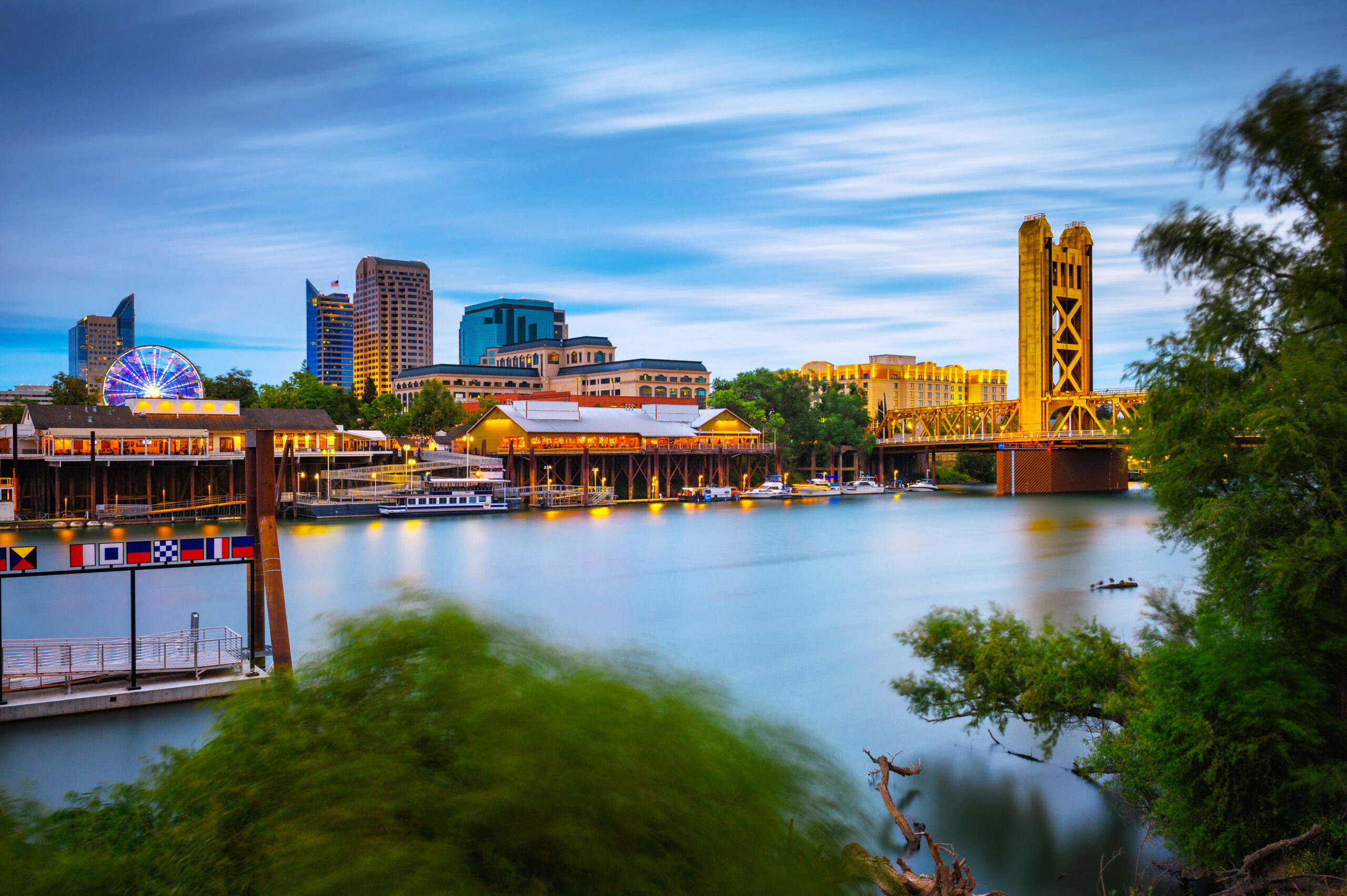After this most recent round of storms, San Francisco has now received more rain (25.3 inches) than it typically does in an entire winter (23.65 inches). Reservoirs statewide are filling up, orange California poppies and invasive yellow oxalises are in bloom and snowboarders in Tahoe and Pacifica alike are happy.
But even though a “bad” California winter—meaning cold and rainy—is actually a “good” winter in terms of helping us claw our way out of a prolonged drought, the specter of a different disaster looms. The IRS has already granted storm-ravaged Califorians two tax extensions, but beyond flood damage or even mudslides, the state’s hydrologic history points to a catastrophe far bigger than what January’s atmospheric rivers delivered: a megaflood in the Central Valley.
It’s happened before—in the winter of 1861-62, in fact. A conveyor belt of storms from December into January pummeled the state, followed by a warm spell that sent unchecked snowmelt streaming out of the Sierras, transforming the Sacramento and San Joaquin valleys into an inland sea for months.
According to Graham Fogg, a professor emeritus of hydrogeology at the University of California Davis, events like this have happened many times in the state’s geological history.
Some 4,000 people died in what was called the Great Flood, amounting to 1% of the state’s population and ravaging the economy enough to tip California into bankruptcy. The water was 30 feet deep in some places, with the low-lying city of Sacramento being particularly hard hit. Governor-elect Leland Stanford was forced to attend his own inauguration via rowboat.
There’s a reason California’s oldest continuous parade was designed to appease the Chinese god of floodwaters.
But according to Nicholas Pinter, a geoscientist at UC Davis, we’re nowhere near there yet. We may even have a bit of cultural amnesia.
“After several dry years, this is just what a wet, stormy winter in California looks like,” Pinter said. “Unless something changes dramatically, 2022-23 will go into the books as a moderately wet winter, with moderate flood flooding and other impacts.”
Additionally, if a wet season already characterized by snow in Berkeley and record-breaking low temperatures in San Francisco does yield another clutch of atmospheric rivers, we have a century and a half of flood control measures to protect us.
“California’s 160-year history of flood management is ‘good, but not good enough,’” Pinter said. “Our flood infrastructure of dams, reservoirs, bypass channels, levees, etc. would certainly blunt some of those impacts today.”
Fogg said while this winter’s rains haven’t approached the level of 1861-62, it’s also important to note that the Central Valley didn’t have nearly the buildup of human civilization that it does now.
“Over geologic time, thousands or tens of thousands of years, the Central Valley has filled up with water to the point that much of it looks like a giant lake,” Fogg said. “That’s happened in the past, although not much since 1862.”
Massive floods even explain the valley’s fertility. With only one outlet for water to escape—the Delta system that ultimately drains into San Francisco Bay—massive floods every 500 or 1,000 years take their sweet time to recede, and gradually reshape the land as they do.
“The Central Valley has had that happen over thousands of years many times, and that’s one of the reasons that’s so flat,” Fogg said. “Standing water for weeks and months tends to deposit lots of fine grained sediments and soils.”
The term for such a cataclysm, Fogg added, is “Noachian”—that’s “no-ACK-ee-in,” a reference to the biblical patriarch who survived a giant flood by living in a floating zoo.
As we know from footage of the 2011 Japanese tsunami and other disasters, when excessive water meets human civilization, it tends to leave toxic crud in its wake. Although water quality in the Delta might suffer from what Fogg calls the “first flush,” pristine Sierra snowmelt even in enormous amounts could have one positive effect.
“That’s great for recharging groundwater,” he said. “When we’re looking at the rivers in the Central Valley now, because of groundwater pumping, they infiltrate a lot of water into groundwater. When you look at the quality near those rivers, it tends to be much better: lower in nitrates and salinity and other contaminants.”
Dilution is not the solution to pollution, he added, but the real problem is insufficient data. No one really knows how hard it rained in 1862, because no one was really measuring it. After all, more people live in Oakland today than lived in the entire state back then.
It was a difficult time to be a Californian, no doubt about it. Only a few years after the Great Flood, an earthquake with its epicenter in Hayward struck in 1868, causing widespread damage and at least 30 deaths. Four years later, an even stronger earthquake in the sparsely populated Owens Valley nearly obliterated the town of Lone Pine and shook half the state.
Nothing matched the Great Flood’s destructive power, though. The United States Geological Survey knows that it’s likely to happen again eventually, and the agency refers to a future flood as the “ARkStorm Scenario.” Although the capitalized “AR” technically stands for “atmospheric river,” it also carries a distinct connotation of a special forces tactical operation along with Old Testament wrath. Noachian, indeed.
